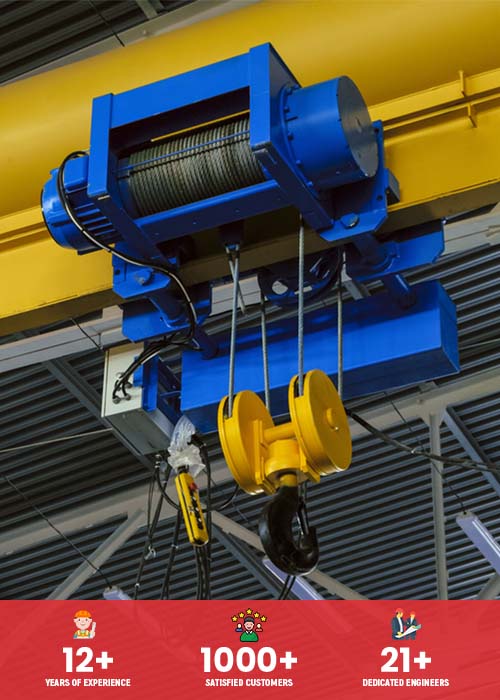Anti-Collision Systems in EOT Cranes
During the material handling procedures, several cranes are used. On the same runway, cranes clash because there is insufficient protection and warning systems. A type of “time-of-flight” technology is employed in anti-collision systems by the EOT cranes manufacturers in India, where a sensor is fixed on both crane ends. These are perfect for logistical applications because they can work in even high temperatures, accurately detect approaching cranes, and detect walls up to 50 meters away. These kinds of operation-specific applications are likewise addressed by long-range distance sensors, such as ultrasonic sensors.
Anti-collision systems are extremely important for cranes and we will discuss all the aspects related to them in this article.
Working of Anti-Collision Systems
An anti-collision system’s fundamental idea is straightforward: it makes use of a sensor and a relay to interrupt the control supply to the long-distance operation. Cranes with anti-collision systems installed can be programmed to stop and slow down when they approach another crane or object. This anti-collision system technology is perfect for continuous duty and was created especially for crane applications.
These tools help save the operators’ lives in addition to protecting the plant’s material handling machinery. Crane operators who are traveling in cab-operated cranes can be alerted by the anti-collision sensors in the crane. It helps in their ability to slow down cranes and avert potentially hazardous situations.
Technical aspects of the Anti-Collision Systems
Each set in the system comes with a reflector and an emitter/sensor module. The idea behind how anti-collision sensors function is called retro-reflective infrared waves. Along the reflector’s path, the emitter contributes to the emission of infrared rays. As a result, the reflector directs infrared light toward the sensor.
When reflected infrared rays are present, sensors pick them up and examine the activity. It sounds another alert and promptly pauses or lowers the crane’s speed. Cranes operate normally when two of them are positioned such that reflected waves do not reach the sensors.
Features of Anti-Collision systems in cranes
It is similar to an emergency braking system in that the sensor may detect foreign objects by sensing the atmosphere around it. An anti-collision device is initially calibrated according to the requirements of the user once it is put on the machine. Depending on its intended use, the reaction time sensor for your anti-collision device plays a crucial role. The machine will travel around 10 meters ahead of the Anti-Collision Device before stopping. The ACD should be tested for response to exterior objects in the final operational environment after mounting and calibration.
Importance of Anti-Collision systems
Anti-collision systems are categorized as safety equipment that prevents collisions between two machines. In the absence of such a mechanism, manually or automatically operated machinery has the potential to move outside the work area, endangering neighboring machinery, equipment, and buildings. Therefore, ACD systems for cranes improve worker safety and support the best possible operational process monitoring. Even when the crane is operating at different heights, the anti-collision systems rely on the smooth monitoring of all crane locations to avoid collisions and minimize costly production loss.
Conclusion
The overhead cranes will operate more efficiently, require less maintenance, and protect worker safety if you equip them with collision avoidance systems. For all types of installation and maintenance services for your industrial cranes, Krishna Crane Engineers is a top supplier. Krishna Crane Engineers provides a knowledgeable, competent, and talented team of experts to ensure that your cranes operate with high lifespan value and the lowest operational cost. Their services are available all across India in many different parts.



